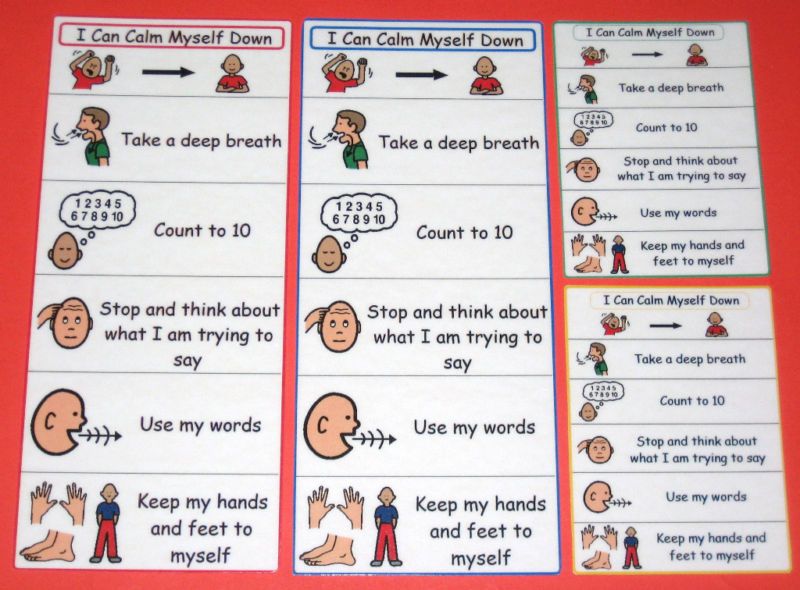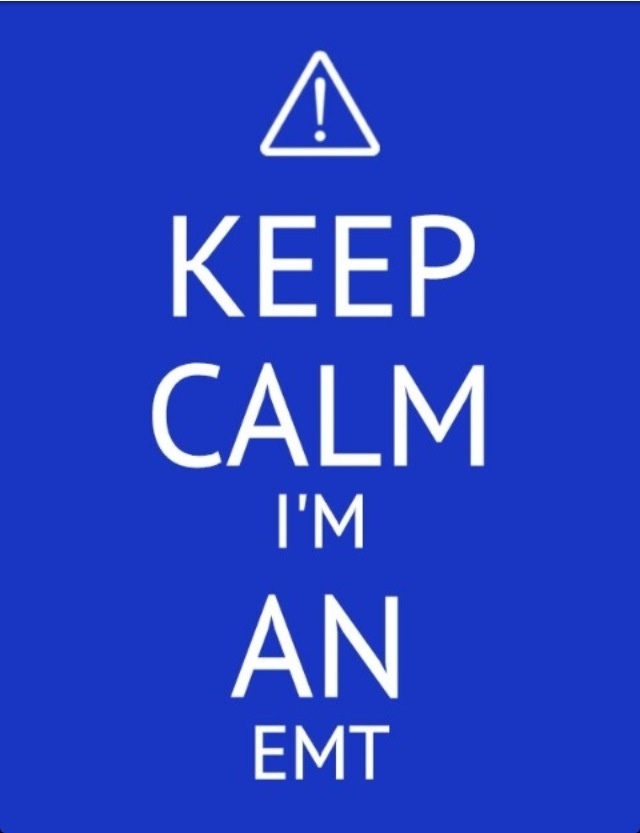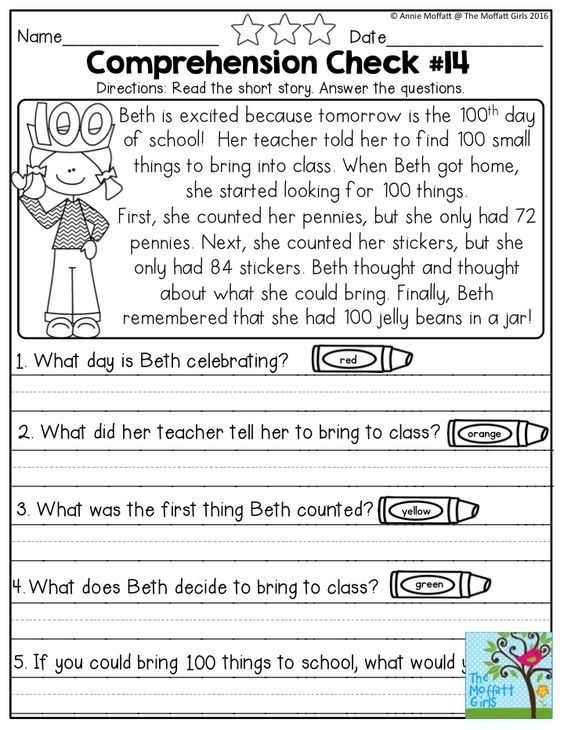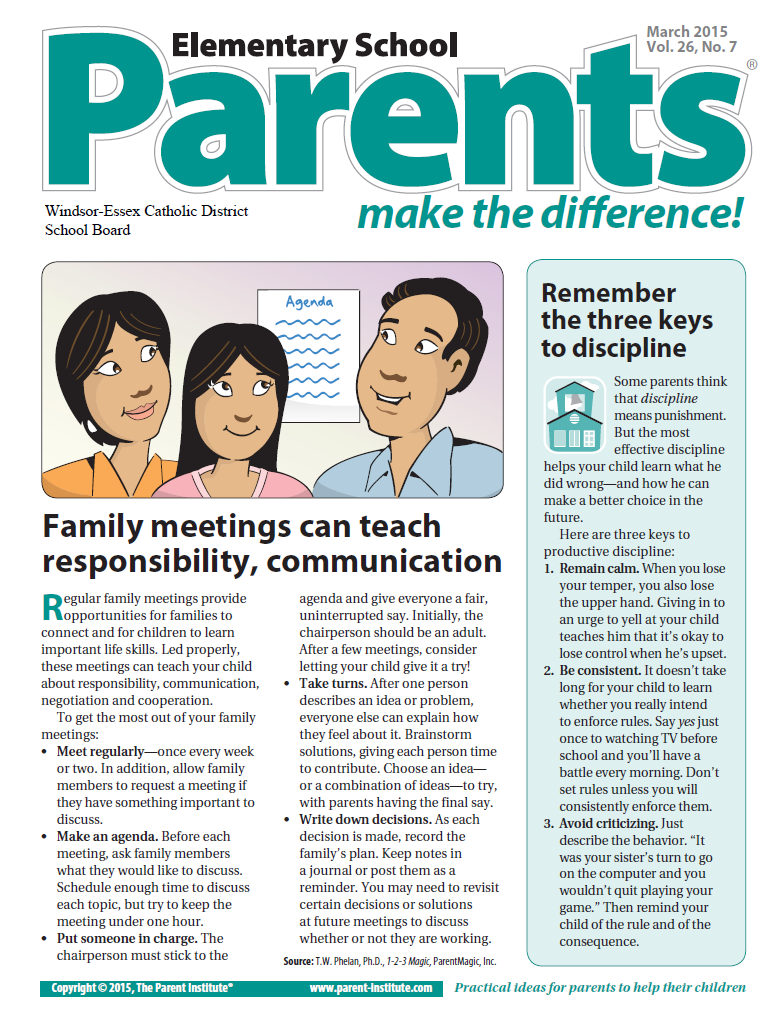I can calm
22 Things to Do When You’re Anxious or Angry
We all worry and get upset from time to time. It’s a normal part of life.
But what happens when that anxiety or anger takes over, and you can’t calm down? Being able to calm yourself in the moment is often easier said than done.
That’s why having a few strategies you’re familiar with can help you when you’re feeling anxious or angry. Consider adding these calming tactics to your toolbox.
Here are some helpful, actionable tips you can try the next time you need to calm down.
1. Breathe
“Breathing is the number one and most effective technique for reducing anger and anxiety quickly,” says Scott Dehorty, LCSW-C, of Delphi Behavioral Health.
When you’re anxious or angry, you tend to take quick, shallow breaths. Dehorty says this sends a message to your brain, causing a positive feedback loop reinforcing your fight-or-flight response. That’s why taking long, deep calming breaths disrupts that loop and helps you calm down.
There are various breathing techniques to help you calm down. One is three-part breathing. Three-part breathing requires you to take one deep breath in and then exhale fully while paying attention to your body.
Once you get comfortable with deep breathing, you can change the ratio of inhalation and exhalation to 1:2 (you slow down your exhalation so that it’s twice as long as your inhalation).
Practice these techniques while calm so you know how to do them when you’re anxious.
2. Admit that you’re anxious or angry
Allow yourself to say that you’re anxious or angry. When you label how you’re feeling and allow yourself to express it, the anxiety and anger you’re experiencing may decrease.
3. Challenge your thoughts
Part of being anxious or angry is having irrational thoughts that don’t necessarily make sense. These thoughts are often the “worse-case scenario.” You might find yourself caught in the “what if” cycle, which can cause you to sabotage a lot of things in your life.
When you experience one of these thoughts, stop and ask yourself the following questions:
- Is this likely to happen?
- Is this a rational thought?
- Has this ever happened to me before?
- What’s the worst that can happen? Can I handle
that?
After you go through the questions, it’s time to reframe your thinking. Instead of “I can’t walk across that bridge. What if there’s an earthquake, and it falls into the water?” tell yourself: “There are people that walk across that bridge every day, and it has never fallen into the water.”
4. Release the anxiety or anger
Dehorty recommends getting the emotional energy out with exercise. “Go for a walk or run. [Engaging] in some physical activity [releases] serotonin to help you calm down and feel better.”
However, you should avoid physical activity that includes the expression of anger, such as punching walls or screaming.
“This has been shown to increase feelings of anger, as it reinforces the emotions because you end up feeling good as the result of being angry,” Dehorty explains.
5. Visualize yourself calm
This tip requires you to practice the breathing techniques you’ve learned. After taking a few deep breaths, close your eyes and picture yourself calm. See your body relaxed, and imagine yourself working through a stressful or anxiety-causing situation by staying calm and focused.
By creating a mental picture of what it looks like to stay calm, you can refer back to that image when you’re anxious.
6. Think it through
Have a mantra to use in critical situations. Just make sure it’s one that you find helpful. Dehorty says it can be, “Will this matter to me this time next week?” or “How important is this?” or “Am I going to allow this person/situation to steal my peace?”
This allows the thinking to shift focus, and you can “reality test” the situation.
“When we’re anxious or angry, we become hyper-focused on the cause, and rational thoughts leave our mind. These mantras give us an opportunity to allow rational thought to come back and lead to a better outcome,” Dehorty explains.
7. Change your focus
Leave the situation, look in another direction, walk out of the room, or go outside.
Dehorty recommends this exercise so you have time for better decision making. “We don’t do our best thinking when anxious or angry; we engage in survival thinking. This is fine if our life is really in danger, but if it isn’t life threatening, we want our best thinking, not survival instincts,” he adds.
8. Have a centering object
When you’re anxious or angry, so much of your energy is being spent on irrational thoughts. When you’re calm, find a “centering object” such as a small stuffed animal, a polished rock you keep in your pocket, or a locket you wear around your neck.
Tell yourself that you’re going to touch this object when you’re experiencing anxiety or frustration. This centers you and helps calm your thoughts. For example, if you’re at work and your boss is making you anxious, gently rub the locket around your neck.
9. Relax your body
When you’re anxious or angry, it can feel like every muscle in your body is tense (and they probably are). Practicing progressive muscle relaxation can help you calm down and center yourself.
Practicing progressive muscle relaxation can help you calm down and center yourself.
To do this, lie down on the floor with your arms out by your side. Make sure your feet aren’t crossed and your hands aren’t in fists. Start at your toes and tell yourself to release them. Slowly move up your body, telling yourself to release each part of your body until you get to your head.
10. Drop your shoulders
If your body is tense, there’s a good chance your posture will suffer. Sit up tall, take a deep breath, and drop your shoulders. To do this, you can focus on bringing your shoulder blades together and then down. This pulls your shoulders down. Take a few deep breaths.
You can do this several times a day.
11. Identify pressure points to calm anger and anxiety
Going for a massage or getting acupuncture is a wonderful way to manage anxiety and anger. But it’s not always easy to find time in your day to make it happen. The good news is, you can do acupressure on yourself for instant anxiety relief.
This method involves putting pressure with your fingers or your hand at certain points of the body. The pressure releases the tension and relaxes your body.
One area to start with is the point where the inside of your wrist forms a crease with your hand. Press your thumb on this area for two minutes. This can help relieve tension.
If you’re short on time but need to calm down fast, these quick in-the-moment tips can help.
12. Get some fresh air
The temperature and air circulation in a room can increase your anxiety or anger. If you’re feeling tense and the space you’re in is hot and stuffy, this could trigger a panic attack.
Remove yourself from that environment as soon as possible and go outside — even if it’s just for a few minutes.
Not only will the fresh air help calm you down, but also the change of scenery can sometimes interrupt your anxious or angry thought process.
13. Fuel your body
Being hangry never helps. If you’re hungry or not properly hydrated, many relaxation techniques won’t work. That’s why it’s important to slow down and get something to eat — even if it’s just a small snack.
That’s why it’s important to slow down and get something to eat — even if it’s just a small snack.
Try nibbling on some dark chocolate. Research shows it can help boost brain health and reduce stress.
Wash it down with a cup of green tea and honey. Studies show green tea can help reduce the body’s stress response. Research has found that honey can help relieve anxiety.
14. Chew gum
Chewing on a piece of gum can help reduce anxiety (and even boost mood and productivity). In fact, research shows people who chew gum regularly are typically less stressed than non-gum chewers.
15.
Listen to musicThe next time you feel your anxiety level cranking up, grab some headphones and tune in to your favorite music. Listening to music can have a very calming effect on your body and mind.
16. Dance it out
Get moving to your favorite tunes. Dancing has traditionally been used as a healing art. Research shows it’s a great way to combat depression and anxiety and increase quality of life.
17. Watch funny videos
Sometimes laughter really is the best medicine. Research has found that laughing provides therapeutic benefits and can help relieve stress and improve mood and quality of life. Do a quick internet search to find funny videos for an instant mood boost.
18. Write it down
If you’re too angry or anxious to talk about it, grab a journal and write out your thoughts. Don’t worry about complete sentences or punctuation — just write. Writing helps you get negative thoughts out of your head.
19. Squeeze a stress ball
When you’re feeling stress come on, try interacting with a stress-relief toy. Options include:
- stress ball
- magnetic balls
- sculpting clay
- puzzles
- Rubik’s cube
- fidget spinner
20. Try aromatherapy
Aromatherapy, or the use of essential oils, may help alleviate stress and anxiety and boost mood. Those commonly used in aromatherapy include:
- bergamot
- cedarwood
- chamomile
- geranium
- ginger
- lavender
- lemon
- tea tree
Add a few drops of essential oil to a diffuser, or mix it with a carrier oil (like coconut oil) and apply to your skin for quick relief.
21. Seek social support
Venting to a trusted friend, family member, or coworker can do wonders. Even if you don’t have time for a full play-by-play phone call, a quick text exchange can help you let it all out and help you feel heard.
Bonus points if you engage with a funny friend who can help you laugh for added stress relief.
22. Spend time with a pet
Interacting with your favorite furry friend can decrease levels of the stress hormone cortisol and lower blood pressure. Quality time with a pet can also help you feel less alone and boost your overall mood.
I Can Be Calm by Hailey Scragg, Hardcover
Add to Wishlist
English 173164325X
28.5 In Stock
Book Features:
• 16 pages, 8 inches x 8 inches
• Ages 4-8, PreK-Grade 2
• Simple, easy-to-read pages with illustrations
• Features Mickey, Minnie, Chip and Dale, and more!
• Teaches different calming techniques
The Magic of Reading: Introduce your child to the magic of reading with Disney Learning’s I Can Be Calm book. PreK-2nd grade students learn about different kinds of calming mechanisms with a little help from their favorite Disney characters!
PreK-2nd grade students learn about different kinds of calming mechanisms with a little help from their favorite Disney characters!
Hands-On Reading: Minnie Mouse can feel calm by doing some yoga. Chip and Dale can feel calm by giving someone a hug. Your favorite Disney characters can be calm, and so can you! Discover all the fun things you can do to help you feel calm, too!
Features: More than just an engaging Disney book, this kids book includes vibrant illustrations featuring your child's favorite Mickey and Friends characters, using age-appropriate language to help kids learn about different calming activities.
How It Works: Each spread in the book features a Disney character and a child engaging in the same calming activities such as yoga, counting, listening to music, and more to allow readers to visualize each calming mechanism.
The Magic Of Disney: Disney Learning promotes interactive learning through fun, hands-on activities and beloved Disney characters. The magic of Disney accompanies children every step of the way as they practice essential skills for school success.
The magic of Disney accompanies children every step of the way as they practice essential skills for school success.
Related collections and offers
Product Details
| ISBN-13: | 9781731643254 |
|---|---|
| Publisher: | Rourke Educational Media |
| Publication date: | 01/07/2021 |
| Series: | Disney Learning |
| Pages: | 16 |
| Product dimensions: | 8.20(w) x 8.00(h) x (d) |
| Lexile: | 120L (what's this?) |
| Age Range: | 4 - 8 Years |
Editorial Reviews
04/01/2021
PreS-Gr 2—This series introduces young readers to feelings, movement, kindness, and calming methods using Disney characters. Each book starts with four vocabulary words that will appear in the text. The following pages feature lovely illustrations from Disney movies interspersed with photos of children and families.
School Library JournalAccompanying each image is one or two simple sentences. For example, in I Can Move, an illustration of Moana depicts the princess and her friends playing drums and reads "Moana can play the drums." The next page is a photo of a little boy behind a drum set and reads "I can play the drums." The back matter includes a picture glossary and index. While some of the glossary words work, some of the images will lead to confusion. The word "teacher" is accompanied by the image of a fish from Finding Nemo. Pre-readers will have difficulty connecting the two. VERDICT A fun vocabulary builder for Disney fans, this series uses beloved and familiar characters to introduce words and concepts.
Customer Reviews
Tips on how to soothe a crying baby
Crying is a way for a child to communicate, but despite its naturalness, it is not out of place to try to calm a crying baby. It is logical that parents will have a question: “How to calm the child?” This may seem like a daunting task at times, but understanding the reasons will help you learn how to soothe a crying baby. Remember: you are doing great. We just want to give you some useful tips to help ease your worries. nine0004
Remember: you are doing great. We just want to give you some useful tips to help ease your worries. nine0004
If you have any questions or concerns about your baby's crying, seek medical advice. Sometimes crying can be a sign of an existing medical condition, so it's best to pay attention to any additional symptoms right away.
Why your baby is crying
Baby crying is not only natural but also expected, especially during the first three months of life. Babies usually cry for an hour every day for the first few weeks. At about six weeks old, your baby may cry for up to two hours a day, and from eight weeks on, again for about one hour a day. However, remember that all babies are different and cry differently! nine0015 1
Crying is a way of saying something is wrong. When it comes to learning how to soothe a crying baby, it's important to understand what exactly is causing her anxiety. Your baby may cry if: 1
- he is hungry;
- the baby is troubled by belching or bloating;
- need a diaper change;
- he wants to sleep;
- wants to be picked up or rocked; nine0032
- baby is hot or cold;
- baby has colic;
- feels uncomfortable: wants to roll over, presses on the diaper or clothes, or is disturbed by tight swaddling;
- the baby is teething.

If your baby cries for more than three hours a day and more than three days a week, he may be suffering from colic. However, this is not a reason to panic, and there are several ways to soothe a child with colic. Find out here about colic, its symptoms, and how to soothe a baby with colic. nine0004
If you think reflux (regurgitation) may be the cause of your crying, you can learn more about the different types of reflux and how to manage it here.
Be sure to contact your child's doctor if your baby seems ill or has the following symptoms in addition to excessive crying: 1
- fever;
- shortness of breath or cough; nine0032
- vomiting;
- diarrhea;
- rash;
- crying worse when the child is picked up or moved;
- increased irritability or lethargy.
How to soothe a crying baby
Once you have ruled out some potential causes of crying, you will have a better idea of how to soothe your baby. The most important thing to remember is not to get upset and stay as calm as possible. nine0004
The most important thing to remember is not to get upset and stay as calm as possible. nine0004
Here are some tips and tricks on how to calm your baby: 2
1. Swaddle your baby.
One of the most useful techniques to soothe a crying baby is swaddling. When doing this, make sure that you do not cover the child's head and do not overheat him. Don't swaddle your baby too tight: swaddling too tightly can interfere with your baby's natural body position, breathing, and blood circulation: your baby may not like it, causing him to cry. Don't swaddle your baby when he starts to roll over, which usually happens around four months of age. nine0004
2. Hold the child in your arms and comfort.
When your baby is crying, it's natural for you to want to pick him up. And when your newborn cries for no reason, he probably wants to be picked up. If you're trying to calm your baby at night, try keeping him upright or in a rocking chair until he falls asleep. Any gentle strokes or vibrations can be very soothing. You can also give your baby an ultra soft pacifier, which is recommended for soothing newborns. This pacifier will help your baby feel comfortable and safe. nine0004
Any gentle strokes or vibrations can be very soothing. You can also give your baby an ultra soft pacifier, which is recommended for soothing newborns. This pacifier will help your baby feel comfortable and safe. nine0004
Author Uliana Smirnova
August 30, 2021
RBC Style shares proven methods that will help relieve emotional stress and calm down in a matter of minutes
Stressful situations happen to people almost daily. Lack of time, difficulties at work, illness of loved ones - all this can unbalance. At such moments, the heartbeat quickens, adrenaline is released, muscles tense up, breathing gets out of hand. However, the possibilities of the nervous system are not unlimited - its defenses are gradually depleted. nine0004
Prolonged stress can weaken the immune system, provoke nervous breakdowns, upset the psyche. According to doctors, many diseases arise precisely on the basis of nerves. For example, diabetes and bronchial asthma. Some experts even find a link between stress and cancer.
Some experts even find a link between stress and cancer.
Protecting yourself from nervous situations is almost impossible. But learning to manage your emotions and relieve stress is quite real. Meditation, yoga and proper nutrition help a lot with this. But what about when you need to quickly pull yourself together? The main task in this state is to reduce the level of adrenaline in the blood. We talk about the most effective methods that will help calm the nervous system and return to a familiar state in a short time. nine0004
1. Regain your breath
A five-minute deepening of the breath will help reduce the level of adrenaline and relieve tension. The best-known method is to slowly count to ten or twenty while controlling your inhalation and exhalation. Straighten your back and straighten your shoulders. Breathe slowly, without jerks, concentrating on each breath. Try to stretch the exhalation and make it longer than the inhalation. After each respiratory cycle, there is a short pause of 3-5 seconds. This exercise increases attention, calms the nervous system and reduces stress. If you feel discomfort or dizziness, return to your usual breathing rhythm. nine0004
After each respiratory cycle, there is a short pause of 3-5 seconds. This exercise increases attention, calms the nervous system and reduces stress. If you feel discomfort or dizziness, return to your usual breathing rhythm. nine0004
© Natalia Figueredo/Unsplash
2. Create a virtual image
The adrenaline rush will stop if you take your mind off the stressful situation and start thinking about something else. This method is useful when you are provoked to an outburst of aggression. Start remembering the multiplication table, your favorite poem, phone numbers and friends' birthdays. It is even better to connect the imagination and visualize thoughts, presenting them in the form of pictures, colored and as detailed as possible. Try to mentally draw a cozy cafe or sea coast. Try to feel how the water gently touches your body and takes away negative emotions. If possible, take a comfortable position, relax and close your eyes. To calm down, 4-5 minutes will be enough. nine0004
nine0004
3. Swim or take a shower
A warm, powerful shower will not only relax your muscles and improve blood circulation, but also calm your nerves. And half an hour in the pool will relieve stress after a working day. Another way to relieve emotional stress is to turn on your favorite music and take a hot bath. The effect will be enhanced if you add a few drops of soothing chamomile, lavender, tangerine or lemon balm essential oil to the water. If there is no time for long water procedures, wet your hands and run wet palms over your face, neck and shoulders. Cold water well tones the skin and soothes the nerve receptors. Alternatively, you can use a rose water spray to help freshen up. nine0004
© Robson Hatsukami/Unsplash
4. Turn on the music and dance
Any physical activity can restore mental balance. For example, a half-hour run in the fresh air or an intense workout in the gym. Instead of exercise, you can dance, go for a walk, play badminton, or do some cleaning. During such a load, the brain produces neurotransmitters that are responsible for a good mood and reduce anxiety. It is the body's response to muscle stress. Scientists say that regular exercise is an excellent prevention of depression. And improving the appearance and physical performance will be a nice bonus. nine0004
During such a load, the brain produces neurotransmitters that are responsible for a good mood and reduce anxiety. It is the body's response to muscle stress. Scientists say that regular exercise is an excellent prevention of depression. And improving the appearance and physical performance will be a nice bonus. nine0004
5. Make tea with honey
A glass of pure water will help you quickly restore your normal heart rate and relax. You need to drink slowly - in short sips, taking short breaks between them. In addition to water, hot tea with dessert helps to cope with anxiety and irritation. Swallowing movements calm the nerves, and sweet stimulates the production of “happiness hormones”. At the same time, it is better to replace cookies and sweets with healthy treats. For example, honey, dried fruits or dark chocolate. The latter is good at removing cortisol and catecholamines that cause stress. You can add ginger root, a sprig of oregano, a few mint leaves or jasmine flowers to the drink - these additives are known for their calming effect. nine0004
nine0004
© Rawpixel/Unsplash
6. Do a light self-massage
A good massage therapist will quickly relieve nervous tension and eliminate muscle clamps. If a professional master does not have time for a session, a relaxing massage can be done on your own. A large number of nerve endings are concentrated in the head. Wash your hands thoroughly, sit on a chair and start massaging your temples in smooth circular motions. Gradually move on to the scalp. The fingertips should slide freely over the surface (in the direction of hair growth) and not stretch the skin. Properly performed ten-minute massage improves blood circulation, relieves stress and normalizes sleep. In addition, it stimulates hair growth and strengthens hair follicles. nine0004
7. Start a personal diary
You can relieve accumulated stress with paper and a pen. Stay alone with yourself, take a blank sheet and write about an unpleasant event. When everything is ready, it is recommended to burn or tear the written paper.











